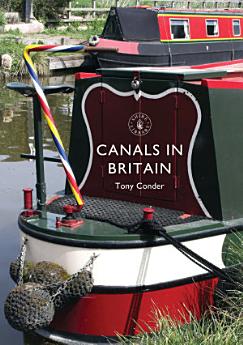Canals in Britain
Tony Conder
এপ্রি ২০১৭ · Bloomsbury Publishing
ই-বুক
80
পৃষ্ঠা
reportরেটিং ও রিভিউ যাচাই করা হয়নি আরও জানুন
এই ই-বুকের বিষয়ে
In the early years of the Industrial Revolution, canals formed the arteries of Britain. Most waterways were local concerns, carrying cargoes over short distances and fitted into regional groups with their own boat types linked to the major river estuaries. This new history of Britain's canals starts with the first Roman waterways, moving on to their golden age in the eighteenth and early nineteenth centuries, and ends with the present day, describing the rise and fall of canal building and use in the UK. It tells the story of the narrow boats and barges borne by the canals, and the boatmen who navigated them as well as the wider tale of waterway development through the progress of civil engineering. Replete with beautiful photographs, this a complete guide to some of the most accessible and beautiful pieces of Britain's heritage.
লেখক সম্পর্কে
Tony Conder has been involved with inland waterways since his parents first took him for walks beside the Wey Navigation. For twenty-five years he was Curator of the British Waterways Collection. Initially he was based at Stoke Bruerne, from where he collected objects from all over the canal system. In 1988 he opened the National Waterways Museum at Gloucester and in 1999 became Curator to the Waterways Trust, taking the collection to national designated status.
ই-বুকে রেটিং দিন
আপনার মতামত জানান।
পঠন তথ্য
স্মার্টফোন এবং ট্যাবলেট
Android এবং iPad/iPhone এর জন্য Google Play বই অ্যাপ ইনস্টল করুন। এটি আপনার অ্যাকাউন্টের সাথে অটোমেটিক সিঙ্ক হয় ও আপনি অনলাইন বা অফলাইন যাই থাকুন না কেন আপনাকে পড়তে দেয়।
ল্যাপটপ ও কম্পিউটার
Google Play থেকে কেনা অডিওবুক আপনি কম্পিউটারের ওয়েব ব্রাউজারে শুনতে পারেন।
eReader এবং অন্যান্য ডিভাইস
Kobo eReaders-এর মতো e-ink ডিভাইসে পড়তে, আপনাকে একটি ফাইল ডাউনলোড ও আপনার ডিভাইসে ট্রান্সফার করতে হবে। ব্যবহারকারীর উদ্দেশ্যে তৈরি সহায়তা কেন্দ্রতে দেওয়া নির্দেশাবলী অনুসরণ করে যেসব eReader-এ ফাইল পড়া যাবে সেখানে ট্রান্সফার করুন।





